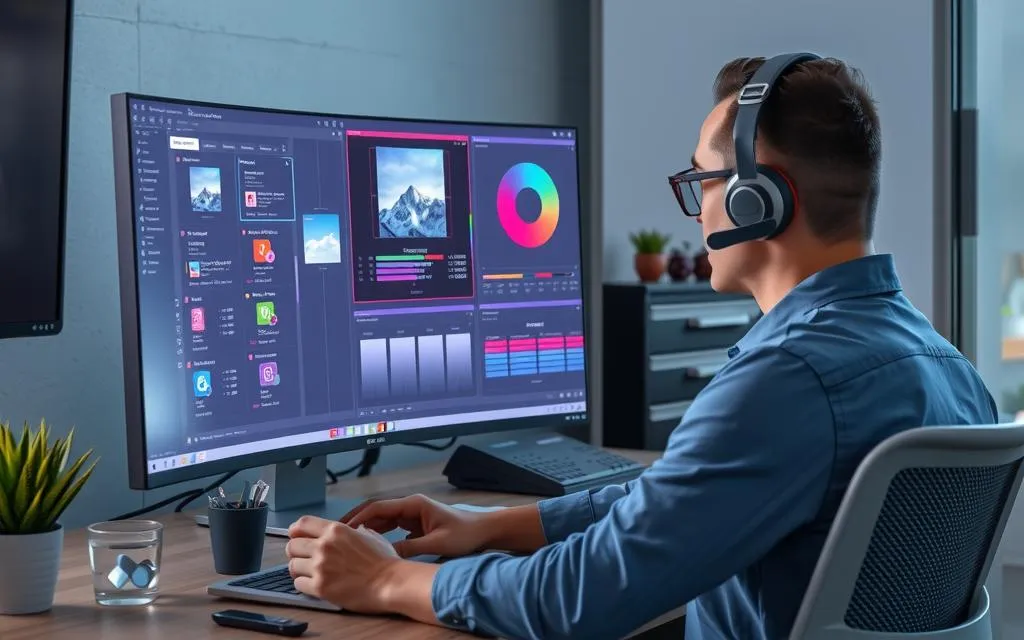In 2024, the fusion of User Experience (UX) design and Artificial Intelligence (AI) has transcended from a growing trend to a pivotal evolution. AI's integration into UX design is profoundly altering the landscape of user interfaces, crafting more intuitive, personalized, and effective experiences. This article explores the transformative impacts of AI on UX design, unveils leading AI-driven UX trends for 2024, and envisions the future of UX design empowered by AI.
AI and UX Design: A Dynamic Convergence
AI utilizes advanced algorithms and machine learning to predict user behaviour, personalize interactions, and refine interfaces. Tools like Microsoft Copilot signify a shift towards adaptive, dynamic user interfaces. This technological advancement allows designers to enhance user engagement through responsive and contextually relevant experiences.
Hyper-Personalized User Experiences
AI's capability to process extensive data sets enables unprecedented personalization. By analyzing user behavior and preferences, AI-driven tools offer tailored content and adaptive features. AI adjusts interface elements according to user histories and preferences, crafting distinctly personal digital environments. For instance, e-commerce platforms use AI to recommend products based on previous purchases, while streaming services suggest content aligned with user viewing habits.
Real-Time Adaptive Designs
Generative AI introduces non-deterministic designs that evolve in real-time based on user interactions. This adaptability ensures interfaces remain fluid and contextually appropriate. For example, Microsoft's dynamic prompts and Fluent AI design language demonstrate how designers can leverage generative AI to create responsive and intuitive user experiences.
2024's AI-Driven UX Trends
Several trends fueled by AI are set to reshape the UX design landscape in 2024:
1. Voice User Interfaces (VUI)
Innovations in natural language processing are propelling Voice User Interfaces (VUI) to new heights. VUI enables seamless and hands-free interactions, vital with the growing use of smart speakers and voice assistants. Applications like Amazon Alexa and Google Assistant showcase how VUI's integration into UX design enhances accessibility and user convenience.
2. Immersive AR and VR
Augmented Reality (AR) and Virtual Reality (VR) are revolutionizing user interactions by creating immersive experiences. AI optimizes these technologies to provide personalized and interactive environments. Companies like IKEA offer AR apps allowing users to visualize furniture in their homes, exemplifying how AR can enhance usability and engagement.
3. Emotionally Intelligent Interfaces
Emotionally intelligent design is an emerging trend where AI-driven interfaces detect and respond to user emotions. By analyzing facial expressions and vocal tones, these interfaces offer empathetic and personalized interactions. This approach not only increases user satisfaction but also builds deeper connections between users and digital products.
4. Inclusive and Accessible Design
AI significantly contributes to accessibility and inclusivity in UX design. It automates the evaluation of accessibility features, ensuring interfaces cater to diverse user needs. For instance, AI tools can identify and recommend improvements for color contrast and text readability, making digital interfaces more inclusive.
5. Engaging Microinteractions
AI-enhanced microinteractions and animated icons add depth to user engagement by providing visual feedback and guiding users through tasks. These subtle yet impactful elements transform static interfaces into lively, interactive experiences. For example, social media platforms use animated icons to inform users of new notifications, enhancing user engagement and interaction.
Embracing the Future: AI in UX Design
The future of UX design, driven by the collaboration of designers, engineers, and data scientists, looks promising with AI's continuous evolution. AI will further revolutionize how user interfaces are conceived and developed, making user experiences more intuitive, engaging, and accessible.
Elevating UX with AI
AI's profound impact on UX is evident through the latest advancements and trends shaping the digital landscape. From hyper-personalized interfaces and emotionally intelligent designs to immersive AR/VR experiences, AI is transforming every aspect of UX design. Embracing AI not only boosts the efficiency and creativity of design processes but also ensures user experiences are more user-centric and contextually relevant.
As AI continues to advance, UX designers are challenged to keep up and innovate. What AI-driven UX trends are you most excited about? Share your thoughts and ideas on how AI is reshaping user experiences, and let’s discuss how we can leverage these technologies to create even more engaging and inclusive digital environments.

